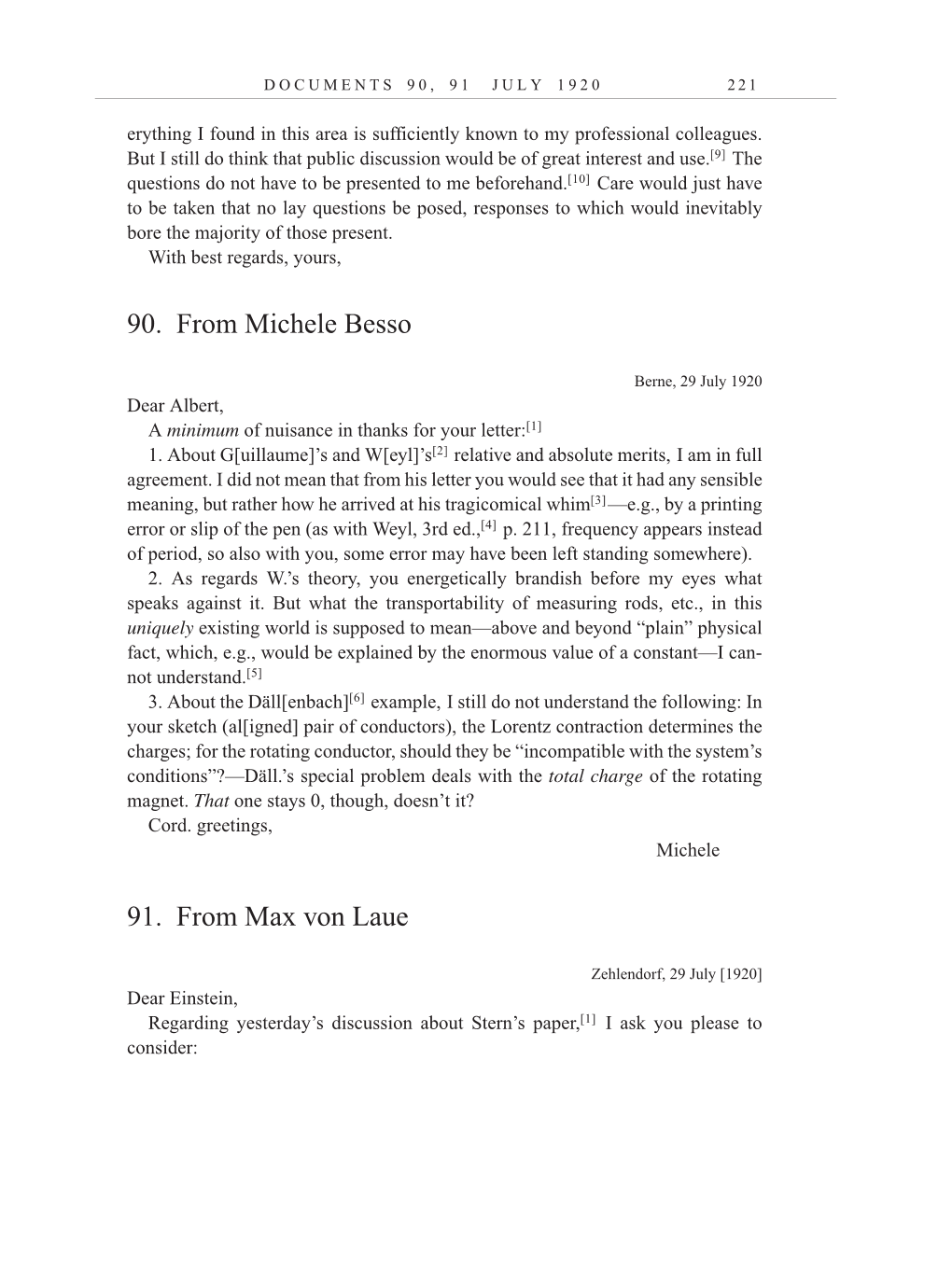D O C U M E N T S 9 0 , 9 1 J U L Y 1 9 2 0 2 2 1
erything I found in this area is sufficiently known to my professional colleagues.
But I still do think that public discussion would be of great interest and
use.[9]
The
questions do not have to be presented to me
beforehand.[10]
Care would just have
to be taken that no lay questions be posed, responses to which would inevitably
bore the majority of those present.
With best regards, yours,
90. From Michele Besso
Berne, 29 July 1920
Dear Albert,
A minimum of nuisance in thanks for your
letter:[1]
1. About G[uillaume]’s and
W[eyl]’s[2]
relative and absolute merits, I am in full
agreement. I did not mean that from his letter you would see that it had any sensible
meaning, but rather how he arrived at his tragicomical
whim[3]
—e.g., by a printing
error or slip of the pen (as with Weyl, 3rd
ed.,[4]
p. 211, frequency appears instead
of period, so also with you, some error may have been left standing somewhere).
2. As regards W.’s theory, you energetically brandish before my eyes what
speaks against it. But what the transportability of measuring rods, etc., in this
uniquely existing world is supposed to mean—above and beyond “plain” physical
fact, which, e.g., would be explained by the enormous value of a constant—I can-
not
understand.[5]
3. About the
Däll[enbach][6]
example, I still do not understand the following: In
your sketch (al[igned] pair of conductors), the Lorentz contraction determines the
charges; for the rotating conductor, should they be “incompatible with the system’s
conditions”?—Däll.’s special problem deals with the total charge of the rotating
magnet. That one stays 0, though, doesn’t it?
Cord. greetings,
Michele
91. From Max von Laue
Zehlendorf, 29 July [1920]
Dear Einstein,
Regarding yesterday’s discussion about Stern’s
paper,[1]
I ask you please to
consider:
